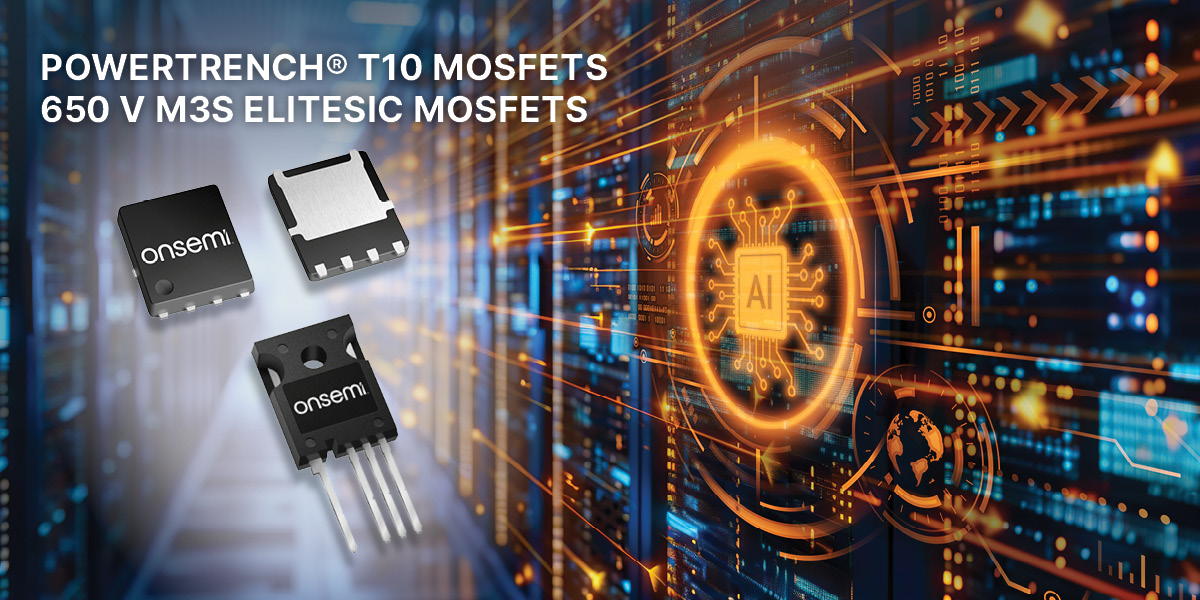데이터센터가 AI 워크로드의 엄청난 처리요구를 지원하기 위해 점점 더 많은 전력을 소비함에 따라 에너지 효율성이 중요해지고 있다. 일반 검색엔진과 비교해 AI 지원엔진은 10배 이상의 전력이 필요하다. 이에 전세계적으로 데이터센터 전력 수요가 2년 이내에 약 1,000TWh에 달할 것으로 예상된다.

▲온세미 T10 파워트렌치(T10 PowerTrench) 제품군과 엘리트 실리콘 카바이드(이하 EliteSiC) 650V MOSFET 출시 / (이미지:온세미)
T10 파워트렌치·EliteSiC 650V 모스펫 공개
전력 하마 AI 엔진, 에너지 효율성으로 해결
데이터센터가 AI 워크로드의 엄청난 처리요구를 지원하기 위해 점점 더 많은 전력을 소비함에 따라 에너지 효율성이 중요해지고 있다. 일반 검색엔진과 비교해 AI 지원엔진은 10배 이상의 전력이 필요하다. 이에 전세계적으로 데이터센터 전력 수요가 2년 이내에 약 1,000TWh에 달할 것으로 예상된다.
온세미가 T10 파워트렌치(T10 PowerTrench) 제품군과 엘리트 실리콘 카바이드(이하 EliteSiC) 650V MOSFET를 7일 발표했다.
이 제품은 데이터센터 애플리케이션을 위해 작은 설치 공간에서도 효율성과 방열 성능을 제공하는 솔루션을 만들었다.
하나의 AI 요청사항을 처리하기 위해서는 그리드로부터 프로세서까지 에너지가 4번 변환되며, 이로 인해 약 12%의 에너지 손실이 발생할 수 있다. 데이터센터에서는 T10 파워트렌치 MOSFET 제품군과 EliteSiC 650V MOSFET 솔루션을 사용해 전력 손실을 약 1%만큼 줄일 수 있다고 설명했다.
이를 전세계 데이터센터에 도입하면, 에너지 소비를 연간 10TWh 혹은 연간 약 100만 가구에 전력을 공급하는 데 필요한 에너지 양을 줄일 수 있다는 설명이다.
온세미는 EliteSiC 650V MOSFET이 뛰어난 스위칭 성능과 낮은 디바이스 커패시턴스를 제공해 데이터센터와 에너지 저장 시스템에서 더 높은 효율을 달성할 수 있다고 자신했다. 이전 세대와 비교했을 때, 차세대 실리콘 카바이드(SiC) MOSFET은 게이트 전하를 절반으로 줄이고, 출력 커패시턴스(Eoss)와 출력 전하(Qoss)에 저장된 에너지를 모두 44% 줄였다.
또한 턴오프 시 테일 전류(tail current)가 없고 고온에서 성능이 뛰어나기 때문에 수퍼정션(super junction, SJ) MOSFET에 비해 스위칭 손실을 크게 줄일 수 있다는 것이다. 이를 통해 고객은 시스템 부품의 크기를 줄이면서 작동 주파수를 높일 수 있어 시스템 비용을 전반적으로 절감한다.
이외에도 T10 파워트렌치 MOSFET 제품군은 DC-DC 전력 변환 단계에 필수적인 고전류를 처리할 수 있도록 설계됐다. 또한 콤팩트한 풋프린트에서 향상된 전력 밀도와 뛰어난 열 성능을 제공한다.
이는 초저 게이트 전하와 1밀리옴 미만 온저항의 쉴드 게이트 트렌치 설계를 통해 달성된다. 더불어 소프트 리커버리 바디 다이오드와 낮은 리버스 리커버리 전하(Qrr)은 파형의 흔들림, 오버슈트 및 전기 노이즈를 효과적으로 최소화해 스트레스 상황에 성능·신뢰성·견고성 확보를 지원한다.
T10 파워트렌치 MOSFET 제품군은 자동차 애플리케이션에 요구되는 표준을 충족한다. 이러한 조합의 솔루션은 차세대 고출력 프로세서를 지원하기 위해 하이퍼-스케일 운영자들이 요구하는 엄격한 ORV3(Open Rack V3) 기본 사양에도 충족한다.
온세미 파워 솔루션 그룹 사장인 사이먼 키튼(Simon Keeton)은 “AI와 전기화는 우리의 세상을 재편하고 전력 수요를 급증시키고 있다”면서 “이러한 기술 메가트렌드를 실현하기 위해서는 전력 반도체 혁신을 가속화해 에너지 효율을 개선하는 것이 핵심”이라고 강조했다.
그는 “우리의 최신 솔루션은 에너지 변환 과정에서 발생하는 전력 손실을 크게 줄이고, 차세대 데이터센터에 대한 수요에 의미 있는 영향을 미칠 수 있다”고 말했다.
